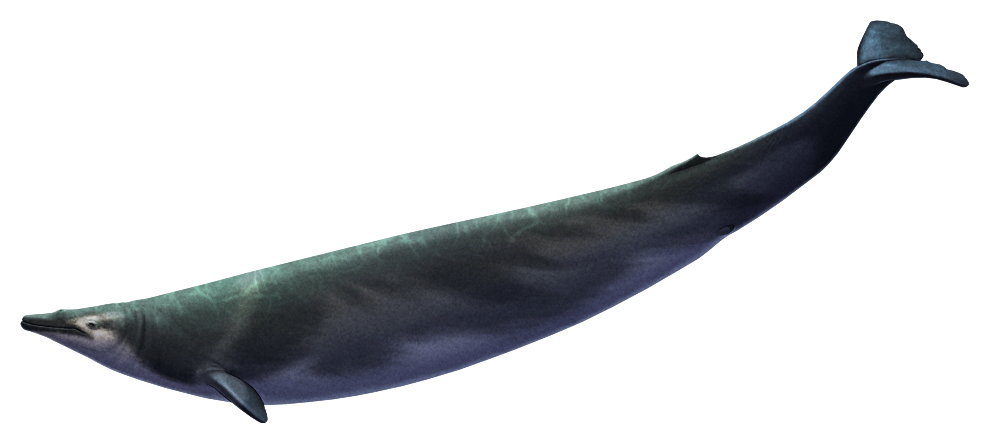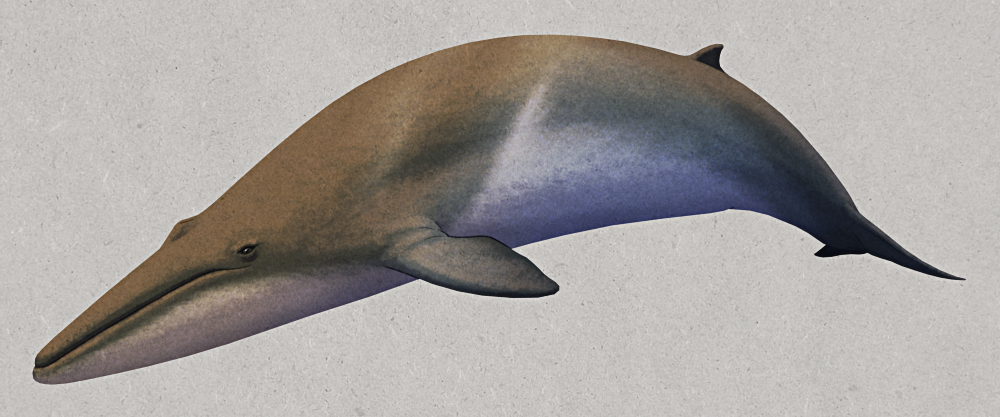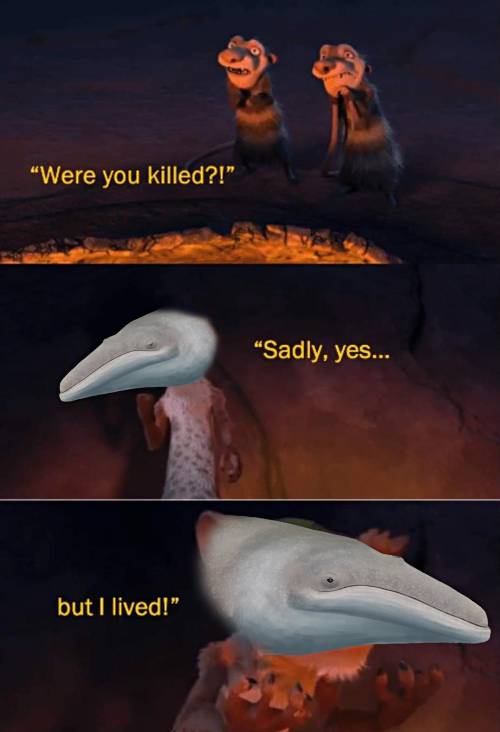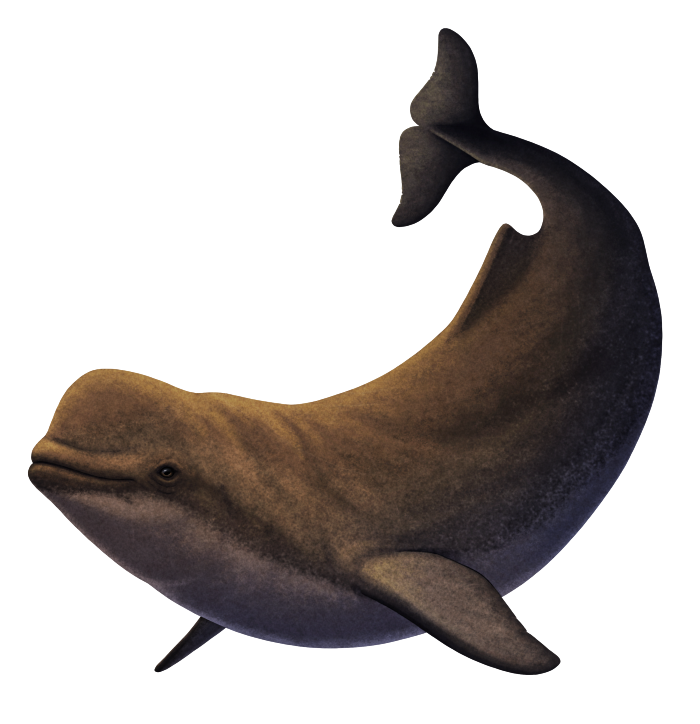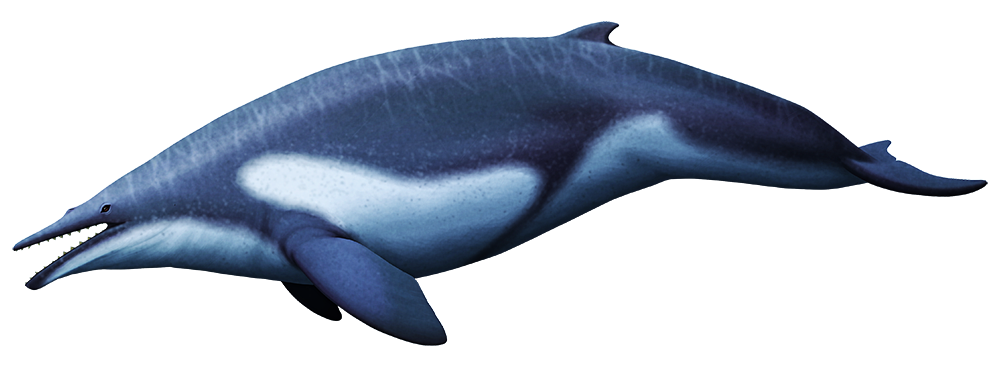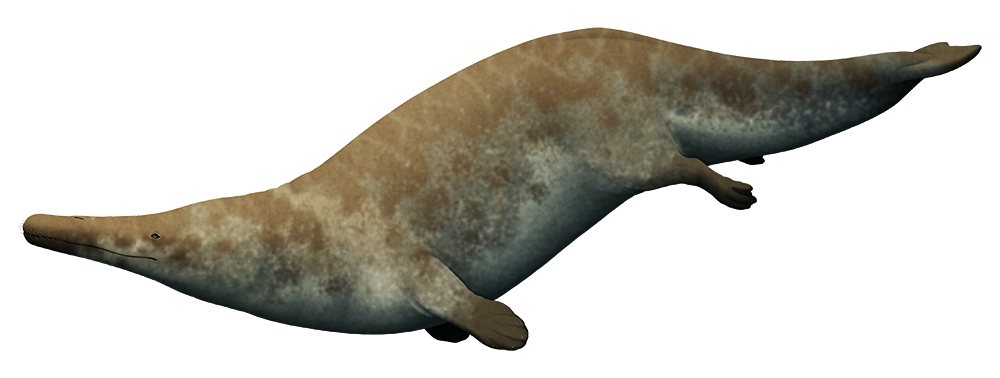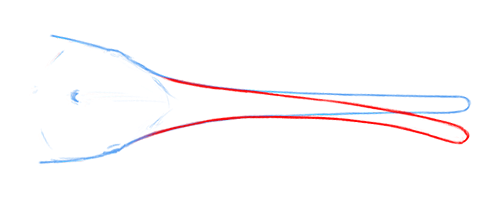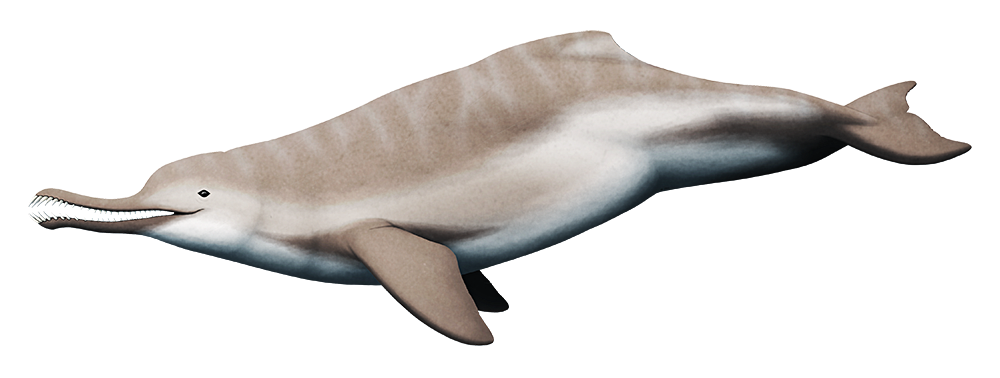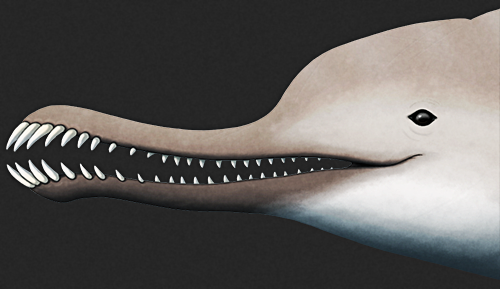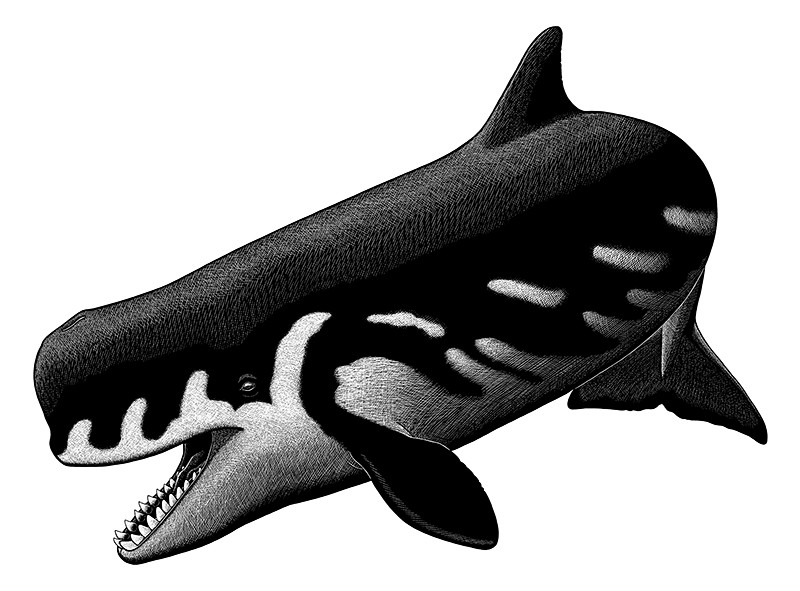Antaecetus aithai was an early whale that lived during the late Eocene (~40 million years ago) in what is now Morocco, at a time when northern Africa was covered by a warm shallow sea.
It was part of the “basilosaurids“, some of the first fully aquatic cetaceans – traditionally considered to be a single defined group, but more recently found to be more of an “evolutionary grade” of multiple early whale lineages – and much like Basilosaurus it had elongated back vertebrae that would have given it a very long slender body shape.
Antaecetus also had a proportionally smaller head and smaller teeth than other basilosaurids, along with much denser bones and a stiffer spine that would have made it a rather slow swimmer with reduced maneuverability. It was also fairly small overall compared to most of its relatives, probably around 6m long (~20′).
It was probably a slow-moving coastal water animal somewhat like modern sirenians – except unlike manatees and dugongs it was carnivorous. Its relatively delicate teeth suggest it was feeding on soft-bodied prey like cephalodpods, and with its lack of speed it must have been some sort of ambush predator, waiting around for potential prey to come within striking range.

